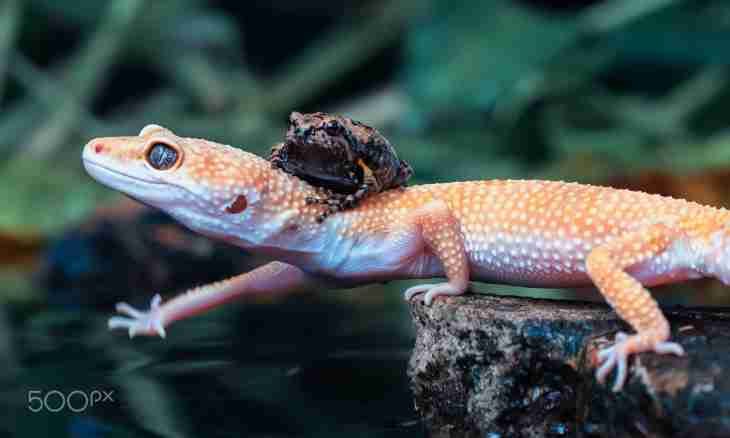Amphibia or amphibians - one of the most ancient classes of animals which is intermediate between fishes and overland vertebrata. Amphibians appeared about 370 million years ago. During a time of the blossoming they reached the huge sizes. Today the Chinese giant salamander reaching 1.5 m in length and weighing about 50 kg is considered the largest. But there are also other types which sizes do not exceed 1-1.2sm. In human understanding of an amphibian – not beauty standard. However ancient Egyptians, for example, even idolized these creations.
Classification of Amphibia
In the world there are about 4500 species of amphibians. They live literally on all continents except Antarctica – behind the Polar circle and in droughty regions, in the conditions of highlands and in salty reservoirs. But most often they can be met in tropics.
Modern Amphibia or amphibians are divided into 3 groups. About 5000 animal species called tailless amphibians enter the first. It is good all the known frogs, toads and also spadefoots, tree frogs, red-bellied toads, etc. Animals of this group have well developed extremities, and back is much longer than lobbies and are intended for movement by jumps; the short trunk, a tail is absent.
The following group – having a tail – includes about 500 species of Amphibia. Here salamanders, tritons, sirens, etc. enter. All amphibians having a tail have the extended body passing into a tail, extremities short and weak. Important feature of an organism of Amphibia of this look is high extent of regeneration – cases of complete and fast recovery of bodies at the animals who lost nearly a half of the body are frequent. The last group – chervyag or legless amphibians. These are the most primitive of all Amphibia who do not have neither a tail, nor extremities. They resemble earthworms superficially.
Features of development and activity of Amphibia
Amphibia lay caviar in water. External fertilization. Berries have no firm protective covers. In water they bulk up, and it protects them from drying. From berries the larvae not similar to adult animals and adapted for dwelling only in the water environment develop. They have bilocular heart, one circle of blood circulation, breathe gills, extremities are absent. Movement happens by means of a tail. In development there is the second circle of blood circulation, heart becomes three-chambered, there are five-fingered extremities, branchiate breath is replaced with air. The structure of a brain and all nervous system becomes complicated. Adult amphibians lead a land life, actively hunting for insects and invertebrate animals and periodically returning to water. One more feature of an organism of amphibians – they breathe oxygen not only in the air environment. In water of an amphibian breathe through skin and when appear on the land, the pulmonary system of breath and a mucous membrane of a mouth is connected. But even in this case, they can receive a half of oxygen necessary for an organism through skin and allocate through it up to 70% of carbon dioxide. All this is possible, only if skin of an animal damp. Some salamanders living on the land have no lungs and gills, and receive all oxygen, necessary for breath, through skin and mucous a mouth. Amphibians have neither edges, nor a diaphragm, nor the muscles allowing lungs to contract and finish, providing breath. The role of the pump which is pumping over air in lungs is carried out by a mouth. Amphibians – cold blooded animals which body temperature depends on the environment. Their ability to survive at low temperatures is well-known. For example, Siberian sablezub – the triton living behind the Polar circle - freely transfers temperature about -20 °, and at times and it is below -30 °C. Some tailless amphibians also have this remarkable property. Their organism allocates in substance blood, the cells of a body of an animal operating like "antifreeze", thanks to what do not perish when freezing. For example, the ordinary frog can spend winter months, having frozen in ice. In the spring it thaws, is warmed and safely continues to live further.
Fillomeduza
The amphibians of family of tree frogs called fillomeduza have interesting features. These are the wood frogs living in Central and South America. They have pads of grasping type – the first finger is opposed to all rest. Fillomeduza are not able neither to jump, nor to float, but well climb trees. They lay caviar on wide leaves, over water somewhere. The animal displaces a leaflet a kulechok and sticks together sticky covers of berries. When tadpoles hatch, the leaf is developed, and they fall in water where there is a further development.

